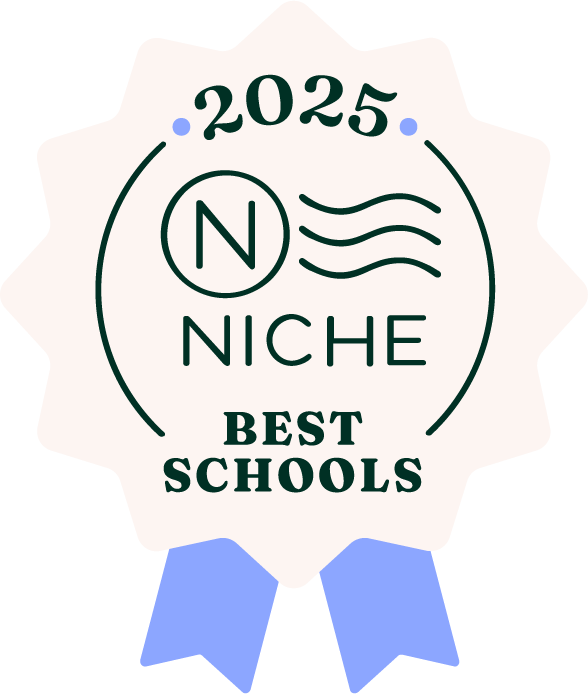Our adolescent program in Upper Elementary (fourth, fifth, and sixth grades) and Junior High (seventh, eighth, and ninth grades) authentically engages each aspect of our students’ development: physical, cognitive, and psychosocial. We provide students with real-life, hands-on, and meaningful opportunities to learn important skills and lessons. And all their work and lessons are seeped in a commitment to excellence.
As Montessorians, we have clear academic and social objectives for each of our students, and we also believe in following the child as they achieve their objectives. Sometimes following the child means adapting our schedule or plans … and sometimes this means going out in the middle of a snow storm.
This winter, a predicted snow storm prompted Greensboro Montessori School (and all area schools) to dismiss at 12 p.m., ahead of an inclement weather event. Our Junior High students were supposed to have spent the day at The Land, our 37-acre satellite campus in Oak Ridge, N.C. where we use the natural world and our 4,000-square-foot retreat center as a base for community building, personal development, and project-based lessons.
Among other projects, the students are currently working on designing and building an outdoor kitchen and community space at The Land. This sort of project-based learning involves many steps, including complex executive functioning and integrated academic skills. Projects are put together in a real and meaningful way that engages the students’ passion and commitment. Our middle school-aged students actually love to learn, which if you have friends in other middle school programs, you know this is not the norm. A few examples of the learning that have been and may be involved in this particular outdoor kitchen project include:
- Running design charrettes to discuss and prioritize the myriad objectives for the space.
- Learning how to survey and measure the physical land, including distances, areas, and slopes.
- Learning and putting into practice permaculture gardening and design principles.
- Conducting online and primary research about various components that could be part of an outdoor kitchen area.
- Talking to vendors and contractors about ideal types of materials, costs of equipment, and potential obstacles.
- Creating a budget and timeline for the entire scope of the project.
- Petitioning administration with their plans and proposed budget for approval.
- Building and working side-by-side with professional contractors to construct the outdoor kitchen and community space.
- Helping to plan a meal and experience at The Land and new outdoor kitchen space for the entire school.
Our students are committed to learning and are personally invested in their work (just like us adults). So, when the idea of not being able to go to The Land for the day and instead having to go home at 12 p.m. ahead of the storm, a different plan was hatched ...
Rather than dismiss early with the rest of the school, our Junior High students chose to hunker down and spend the night in the retreat center at The Land. Families were consulted, extra fire wood was cut, meals were planned by the students, bags were quickly packed, safety plans were already in place, and all the students headed to The Land in advance of the coming snow.
Over the next 24 hours - when the rest of the school was dismissed home and most every other adolescent child in the Greensboro area was plugged into a device or game system - our Junior High students chose more school. And that’s what they got: more school, working on their outdoor kitchen and other lessons. And along the way, they had a lot of fun, built community, and created memories. They baked bread and prepared delicious meals; they hiked in the snowy woods at night; they squealed with delight as they tried to build snow-people; they frolicked with our resident caretaker’s two dogs and read books with his three daughters; they left their cell phones and devices at home; and they felt safe, secure, and at home with their peers and teachers.
This is what adolescent education should look like.
And we know our approach to adolescent education works:
- Our graduates’ average ACT score of 29 is eight points higher than the national average score of 21.
- 9 out of 10 graduates say they are better prepared for the demands of high school than other students in their high school classes.
- Our graduates' average, unweighted high school GPA is 3.8, compared to the state average of 3.4.
- 97% of our graduates say they are successful adults because of their Montessori education.
- Our graduates enter college with an average of 24 credits earned from AP and IB classes in high school.
Who says learning can’t happen in the middle of a snow storm?
[dt_sc_hr_invisible_small]


